Menu
Physics Lesson 3.4.1 - Displacement and Distance in two dimensions
Please provide a rating, it takes seconds and helps us to keep this resource free for all to use
Welcome to our Physics lesson on Displacement and Distance in two dimensions, this is the first lesson of our suite of physics lessons covering the topic of Displacement and Distance in 2 and 3 Dimensions, you can find links to the other lessons within this tutorial and access additional physics learning resources below this lesson.
Displacement and Distance in two dimensions
Let's consider a visual example before dealing with numbers. Look at the figure below.
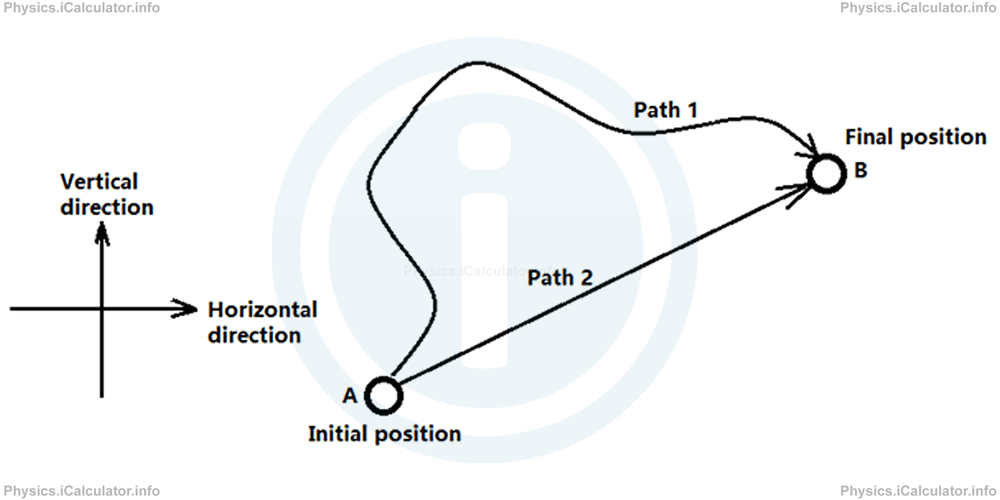
Path 1 represents the Distance travelled by the object if it moves according the curved line given. It is not linear, so if there is no measuring tool available but we are dealing with coordinates only, we must divide the Path 1 into smaller sections that are almost linear to find the path's length (Distance). Look at the figure:
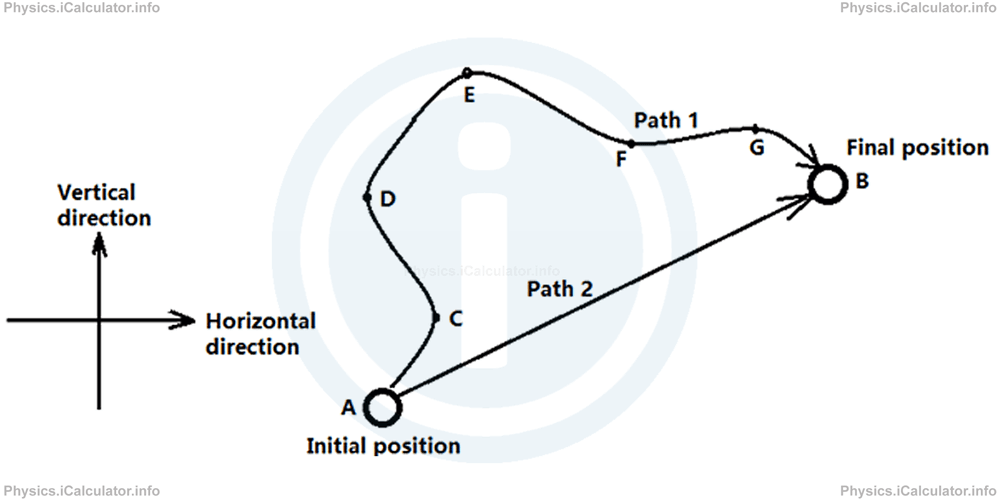
Thus, we can consider the segments AC, CD, DE, EF, FG and GB as linear and then calculating the length of each segment by splitting them into components.
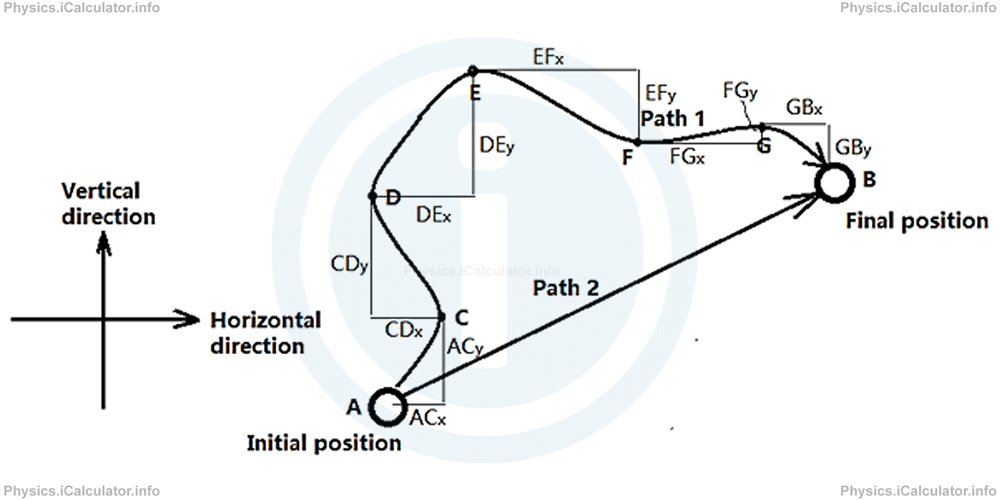
After doing this, we can use the Pythagorean Theorem to calculate the length of each segment (it is the hypotenuse of each right triangle formed) and then adding them mathematically. Thus, we find the Distance with a good approximation (with a small error). Remember, we usually label the horizontal direction by x and the vertical direction with y.
Hence, we can write for the distance s:
As for the displacement, it is much easier to calculate it, as we have to deal only with two components: ABx and ABy. Therefore, the Pythagorean Theorem is used only once, as the hypotenuse of the right triangle represents the magnitude of the displacement.
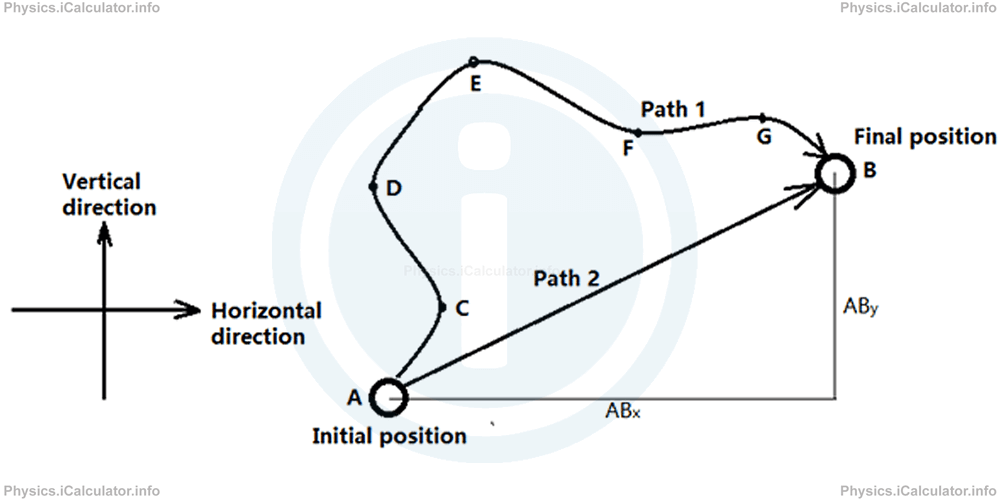
Thus, if we denote the displacement by ∆r⃗ we can write:
If the path resembles a known geometric figure, we must simply calculate the perimeter of this figure in order to find the Distance. For example, if the object moves from A to B according the path shown in the figure,
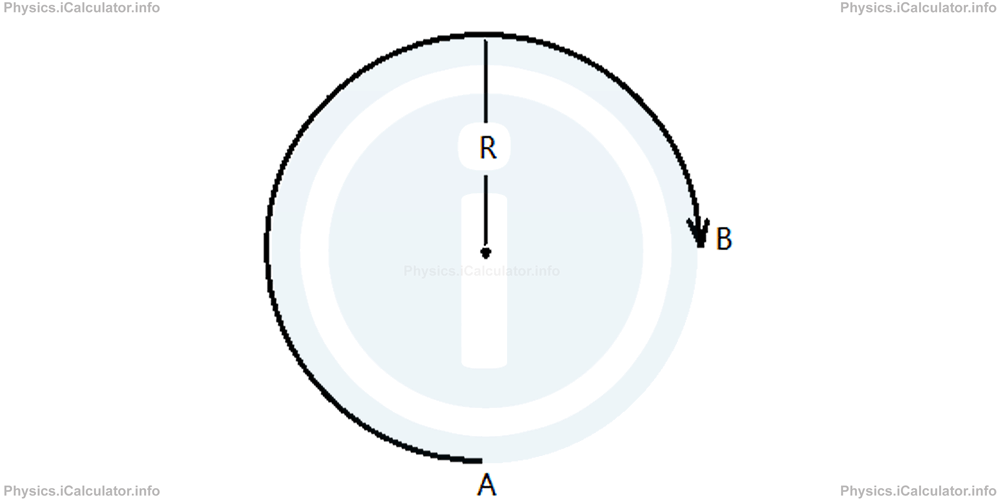
where R is the radius of circle, it is obvious that the Distance s is the length of the arc shown, which it equal to 3/4 of the circumference.
On the other hand, since Displacement represents the shortest path from A to B, here it is equal to the length of the chord AB. Look at the figure:
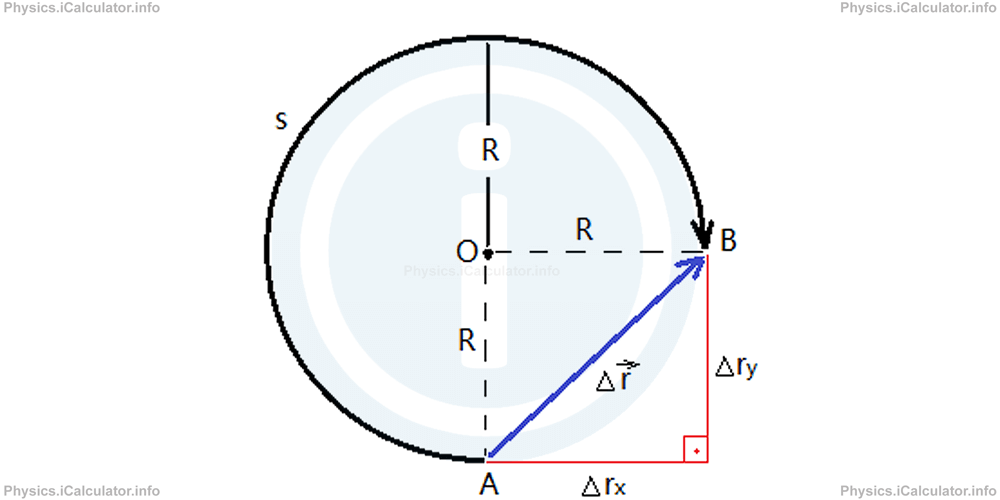
Combining the knowledge obtained in Geometry with the Kinematics concepts, we can write:
s = 3/4 × 2πR
= 6πR/4
= 1.5πR
and
|∆r⃗| = √∆r2x + ∆r2y
= √R2 + R2
= √2R2
= R√2
For example, if the Radius is 14m, and giving that π = 3.14 = 22/7, we obtain for Distance and the magnitude of Displacement
= 1.5 × 22/7 × 14m
= 66m
and
= 14m × 1.414
= 19.8m
You may have noticed in all examples discussed so far that displacement is always shorter or equal to the distance. This is obvious since displacement vector AB⃗ represents the shortest possible distance from A to B.
Example 1
Calculate the Displacement and the Distance travelled by the object shown in the figure if the object has moved according the trajectory ABCDE.
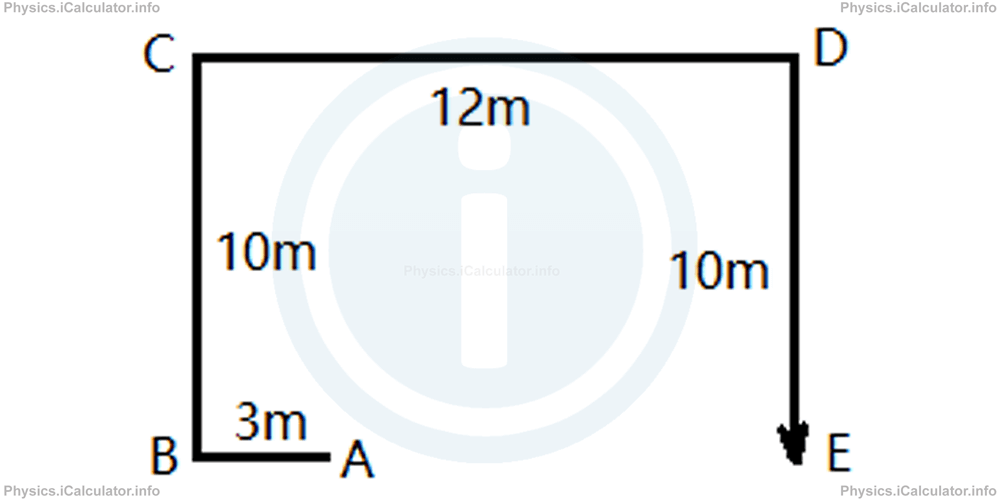
Solution 1
Displacement ∆r⃗ is the shortest path from A to E, i.e it is found by moving due right from A to E as shown below.
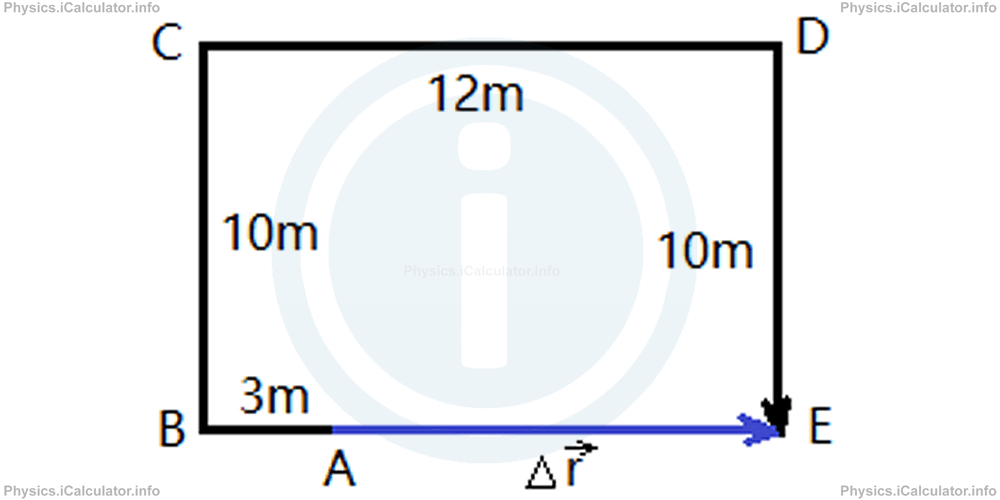
The Displacement vector Δr⃗ is coloured in indigo. Since the figure now is a rectangle, and given that the opposite sides of a rectangle are parallel and equal, it is obvious that
= 12m - 3m
= 9m
Hence, we can write for the Displacement:
As for the distance s, we have to take the sum of all segments in black, i.e. the perimeter of the rectangle BCDE minus the length of the vector AE⃗. Thus, we have:
= 3m + 10m + 12m + 10m
= 35m
You have reach the end of Physics lesson 3.4.1 Displacement and Distance in two dimensions. There are 3 lessons in this physics tutorial covering Displacement and Distance in 2 and 3 Dimensions, you can access all the lessons from this tutorial below.
More Displacement and Distance in 2 and 3 Dimensions Lessons and Learning Resources
Whats next?
Enjoy the "Displacement and Distance in two dimensions" physics lesson? People who liked the "Displacement and Distance in 2 and 3 Dimensions lesson found the following resources useful:
- Two Dimension Feedback. Helps other - Leave a rating for this two dimension (see below)
- Kinematics Physics tutorial: Displacement and Distance in 2 and 3 Dimensions. Read the Displacement and Distance in 2 and 3 Dimensions physics tutorial and build your physics knowledge of Kinematics
- Kinematics Revision Notes: Displacement and Distance in 2 and 3 Dimensions. Print the notes so you can revise the key points covered in the physics tutorial for Displacement and Distance in 2 and 3 Dimensions
- Kinematics Practice Questions: Displacement and Distance in 2 and 3 Dimensions. Test and improve your knowledge of Displacement and Distance in 2 and 3 Dimensions with example questins and answers
- Check your calculations for Kinematics questions with our excellent Kinematics calculators which contain full equations and calculations clearly displayed line by line. See the Kinematics Calculators by iCalculator™ below.
- Continuing learning kinematics - read our next physics tutorial: Speed and Velocity in 1 Dimension
Help others Learning Physics just like you
Please provide a rating, it takes seconds and helps us to keep this resource free for all to use
We hope you found this Physics lesson "Displacement and Distance in 2 and 3 Dimensions" useful. If you did it would be great if you could spare the time to rate this physics lesson (simply click on the number of stars that match your assessment of this physics learning aide) and/or share on social media, this helps us identify popular tutorials and calculators and expand our free learning resources to support our users around the world have free access to expand their knowledge of physics and other disciplines.